Hyundai Tucson Hybrid Vs Ford Escape PHEV Comparison

Do you need a plug?
There are a lot of differences between these two fuel-sipping family crossovers, the Hyundai Tucson Hybrid and Ford Escape PHEV. One has a turbocharged engine, one does not. One is front-drive, one is AWD. A traditional automatic contrasts with an electric CVT. They’re even opposite hues.
Get a Quote on a New Hyundai Tucson Hybrid or Ford Escape PHEVBut it’s the Ford’s little outlet, just aft of the driver-side front wheel arch, that defines this head-to-head. Gas isn’t getting any cheaper, and the idea of emissions-free motoring, even just on short drives, is an appealing one. Managing editor Mike Schlee and I spent a week with both to figure out if plug-in power is worth the extra cash outlay.
Interior and Cargo Space
Tucson: Hyundai has crafted a cohesive, inviting interior in the latest Tucson. The wraparound design is classy, with a hidden vent design reminiscent of the upscale Genesis sister brand, but not an outright copy. Personally, I really dig the memory seat controls being so well integrated into the door design, too. The integrated infotainment screen in the “waterfall” keeps the view out over the hood uncluttered. It’s a good space with high-quality materials, though we wouldn’t say no to a splash of color, or less piano black trim.
The front seats are very comfortable, both power-operated and with driver’s seat memory. A weekend cold snap put the seat heaters to the test—equipped in both rows—with generally good results, but a long wait to get truly toasty. The Tucson also has ventilated thrones up front.
In terms of measurements, the Tucson gives up around an inch of frontal head- and legroom to the Escape, with 38.1 and 41.1 inches (968 and 1,044 millimeters), respectively. Pop into the back seats, and passengers barely miss out, with their own measurements of 38.7 and 41.3 inches (993 and 1,049 mm). Shoulder room is identical in each trucklet, in both rows, with 57.6 inches (1,463 mm) up front and 56.0 inches (1,422 mm) at the back. The seats also recline slightly. The middle backrest folds down to reveal cupholders, but it folds too far, so any beverages will be leaning forward.
Storage space is a very healthy 38.7 cubic feet (1,096 liters) with all seats upright. Fold the second row flat and that number swells to 80.3 cubes (2,274 L). It’s important for us to point out that, should you opt for the plug-in Tucson, those numbers shrink slightly, to 31.9 and 66.3 cubes (903 and 1,877 L), respectively. Towing capacity is 2,000 pounds (907 kilograms).
Escape: The Escape interior design is much less expressive. There are positives, like Ford’s commitment to actual dials—more on those later—and some splashes of lighter color. Like the Tucson, it has a large panoramic moonroof too, letting light into the cabin. But that only shines a spotlight on materials that feel a step (or two) below the competition. The pebbled plastic is brittle and shiny, and that strip of “wood” isn’t fooling anybody. At least those old flip-top desks from school have found another use, I guess. The low-down center console does make the front feel slightly more spacious than the sectioned-off Tucson, as well.
The Blue Oval SUV claws back some points with seats that are every bit as comfortable and supportive as the thrones in the Tucson. They miss out on a little bit of hip support, but these aren’t the sorts of vehicles you’re going to be throwing at a tight corner, so that doesn’t matter. There’s an effective heated element here too, but only for the front row.
“Rear seat space is very similar,” says Schlee, adding that “[the] Escape has a lower arm rest. That’s about the only difference.” It’s true; other than the curved lower middle cushion, the Escape’s rear quarters are remarkably similar to the Tucson’s. According to official measures, it does eke out a small airspace victory, with 39.3 inches (998 mm) of head-bopping space. Legroom is 38.9 inches (988 mm), though it doesn’t feel dramatically different from the Tucson. Front-seat space goes to the Escape, with a stretch-out 42.4 inches (1,077 mm) of legroom. Ford quotes an even 40.0 inches (1,016 mm) for headroom, but that’s without the moonroof, which this tester has.
The Ford’s cargo area is smaller than the gas-only model, though no smaller than the regular hybrid. Seats-up space is 34.4 cubic feet (974 L), and dropping the second row opens that up to 60.8 (1,722 L). The Escape’s seats are notably more sloped here, however. Towing capacity is capped at 1,500 lb (680 kg) for electrified Escapes.
SEE ALSO: Hyundai Tucson Hybrid vs Toyota RAV4 Hybrid Comparison: Fuel-Sipping Family HaulersBottom Line: This is a pretty comprehensive first category win for the big H. The Tucson’s interior isn’t just more spacious (headroom excepted), but it’s far nicer. And it’ll both fit and tow more.
Tech and Features
Tucson: Perhaps the most divisive part of the Tucson package is its infotainment setup. There’s nothing wrong with the touchscreen itself: the 10.25-inch screen is responsive, easy to read, and offers up split-screen functionality. So far, so good.
The design team has prioritized function over form for the rest of the controls, however, and that leaves Tucson drivers stuck with touch controls instead of physical buttons and dials. Is some of the teeth-gnashing about a lack of volume knob over-dramatic? For drivers, yes: that’s what wheel controls are for. But repeatedly poking at a small bit of piano black surface gets old fast for passengers—not to mention mucks up that clean surface designers love so much. Same goes with the climate control. At least Hyundai left the seat and wheel temperature controls as proper buttons ahead of the shifter. Which is, somewhat ironically, the one thing we wouldn’t want to be buttons, but is. We’ll get back to this.
We have no such complaints about the instrument panel. It’s super sharp and feels pitch-perfect for the futuristic Tucson. We like being able to customize the dial look, too—yes, even the weird cubes. That digital IP allows for the Tucson’s cool Blind View Monitor party trick as well, which replaces the respective dial whenever a turn signal is active.
That’s just one piece of the driver assist puzzle in the Hyundai. Automated emergency braking (with pedestrian, cyclist, and junction turning detection), parking sensors front and rear, lane centering, lane-keep, blind-spot monitoring with cross-traffic alert, ultrasonic rear occupant alert, safe exit assist, 360-degree camera—it’s all a part of this top-level trim package. Hyundai also throws in its Highway Drive Assist, which is augmented with navigation-based curve control. And yes, the remote-activated smart-park system is present, too.
Escape: In Titanium trim, the Escape arrives with an 8.0-inch central touchscreen and a 12.3-inch digital instrument cluster. The latter is every inch (ha!) the match for the setup in the Hyundai, with good customization and a soothing blue hue. The infotainment screen follows the feel of the rest of the interior: it does what it needs to, and no more. Sync 3 felt borderline out-of-date when the current Escape launched for 2020, with a dim screen and laggy controls. At least wired Apple CarPlay and Android Auto work without issue.
At least Ford has stuck with physical controls. The climate controls are simple to use, clearly marked and with big rotary dials. Mike praises both the Escape and Tucson for having multi-speed climate control, as well. The dashboard layout isn’t going to please a designer, but it’s the easier setup to use on the move, without looking. That counts for a lot.
The Ford also gets a head-up display, something the Tucson does without. That would normally be a clear advantage, but the Escape’s setup is the sub-optimal separate glass one, instead of beamed onto the windshield. Pop up display in Escape doesn’t angle high enough,” notes Schlee, adding “the speed and information are reflecting off the glass panel which is only as high as the vehicle’s hood.”
Special note to the B&O sound system in the Escape, though. It’s the more impressive setup, with a cleaner sound and more power behind it.
The Escape comes well-stocked on the safety front. It matches the Tucson’s lane-keep, lane centering, adaptive cruise control, and sign recognition. Its automated emergency braking doesn’t include the junction turning detection found in the Hyundai, and there’s no 360-degree camera. Ford’s parking assist is a different beast, helping drivers slot into stall and parallel spots from inside of the car, instead of remote forward and backwards movement only, like the Tucson.
SEE ALSO: 2020 Ford Escape Hybrid vs 2020 Toyota RAV4 HybridBottom Line: The Escape earns some valuable points for its easy-to-use dashboard layout, banging sound system, and HUD. I find its parking assist more useful in more situations, too. But as an overall package, the Tucson’s stronger tech suite edges it ahead here. Just bring lots of microfiber clothes.
Powertrain, Driving Feel, and Fuel Economy
Tucson: Every Tucson hybrid comes with a 1.6-liter turbocharged four-cylinder underhood, shacked up to an electric motor and running through a six-speed automatic to the all-wheel drive system. Combined outputs are 226 horsepower and 258 pound-feet of torque.
We’ve sung the praises of this setup before, because of how “normal” it is to drive. It feels tailor-made for around-town driving. “The Tucson has power in spades off the line and at low speeds,” says Schlee, calling it “surprisingly quick.” Electric-only driving is possible on light throttle, and it’ll even kick in on highway drives if you have the necessary right-foot discipline. The Tucson runs out of steam when you ask more of it at high speeds, however.
Ride quality on those cool 19-inch wheels is clearly the firmer of these two trucklets. It’s not uncomfortable, but it does make more of a meal out of rough roads than the smooth-sailing Escape. The flip-side to this is a more controlled, flat attitude through cornering. There was still a decent amount of snow during the week too, so the Tucson’s AWD system came in handy on slippery starts. Steering weight and feedback are both light, as is typical of the class.
Fuel economy was much worse than expected. Admittedly, it was cold and gross out, but the 28.3 mpg average (8.3 L/100 km) was well below the quoted 37 mpg (6.4 L/100 km) combined figure. We found the Tucson at its thirstiest on the highway, where it would regularly stay in fifth instead of sixth gear. Using the wheel-mounted paddles would temporarily fix this.
Escape: While gas-only Escapes have gone the EcoBoost route, the hybrid and PHEV models employ a 2.5-liter naturally-aspirated motor. This combines with a more powerful electric motor for a combined 221 hp. The Ford sends that power through an electronic-CVT exclusively to the front wheels. Yep, if you want an electrified AWD Escape, you’ll have to stick to the regular hybrid.
We don’t want to bang the “AWD is better” drum too loudly here—remember, proper winter tires matter more than the number of driven axles, and both of these testers came properly equipped. But in the slushy stuff, it was clear the Ford could benefit from another set of contact patches, specifically from standing starts. On the move, this mattered less, and in fact, made the Escape feel lighter than the Tucson, even though it’s hauling an extra hundred pounds or so.
If cruising comfort is your top dynamic priority, the Escape is your ride. It has the softer, more comfortable suspension tuning, though it does transmit more road noise into the cabin. Highway speeds are its forte; around town, the nat-asp four-pot lacks torque. This means the electric motor kicks in often. That said, it’s often not enough to move the Escape all on its own, so there will be some assist from the ICE.
Mike tried an EV range test, and managed just 13 miles (21 km) while prioritizing electrons. Even then, the engine kept engaging because it was so cold out. He estimated a 16–18 mile range in our 14-degree F (-10-degree C) weather, but that’s still well shy of the quoted 37-mile (60 km) range.
I tested the PHEV in a different way: I picked it up with zero battery. Even then, on its drive home it averaged 39 mpg (6.0 L/100 km), spending 40 percent of the drive in EV mode. After the week, it averaged 33 mpg (7.1 L/100 km), down from the official 40 mpg (5.8 L/100 km) combined rating. It’d be nice to be able to force the system to hold onto a charge, instead of it trying to drain the battery on the highway, where it’s least efficient.
Charge time on the Ford Escape PHEV is 10.5 hours with 120-volt outlet; that drops to 3.5 hours on a 240-volt setup.
Bottom Line: This is a draw. The Ford is far and away the economy champ, and the happier cruiser. The lack of available AWD hurts its appeal the further north you live, however, and we wish we had more control over electric-only mode. On the flip side, the Tucson is more assertive to drive, with better steering feel and a more responsive drivetrain. If only it got close to its quoted fuel economy figures—we expect a dip in colder weather, but this was dramatic.
Styling
Tucson: A year on the roads has made the Tucson a more common sight, but it’s still a remarkably futuristic package for the most mainstream of mainstream segments. The integrated headlights are still cool, with the hidden grille DRLs a feature that still regularly draws looks. The complicated side surfacing falls just short of fussy, and those pretty 19-inch wheels have an almost flower-like look to them. Then there’s the rear hatch, with a distinctive taillight design that makes the Tucson immediately recognizable at night.
Escape: People questioned whether Aston Martin could make an SUV, and it turns out it could … oh. This isn’t the DBX. Whoops.
The Escape eschews the chunky styling of much of its classmates. It’s all soft curves, and a few years have softened the impact of that basking shark grille. The Escape is one of the more car-like compact crossovers out there, giving it a unique angle. Ford having the Bronco Sport to attack the market from the other side surely helps, too. This is an attractive enough shape, and only the charge port and tiny tailgate badge give up that this is the PHEV.
Bottom Line: You’ve read it before: tastes vary. While we both gravitate towards the Tucson, we see the appeal in the Escape.
SEE ALSO: Toyota RAV4 vs Nissan Rogue ComparisonPricing and Value
Tucson: As tested, this Canadian-spec Tucson Hybrid lists for $39,245 ($43,524 CAD), including destination. The only major difference between it and US models is the trim name: what is Limited down south is Ultimate up north. No, we don’t know why either.
American buyers can pick up a Tucson Hybrid Blue for as little as $30,595, while the SEL Convenience finds a sweet spot of $33,195. Canadian buyers only have two trims to choose from: the top trim you see here, and the $40,924 CAD Luxury trim, which drops the larger touchscreen, HDA, Blind View Monitor, and a few other tech goodies.
A plug-in hybrid Tucson is also available, ranging from $36,145 to $43,945 ($45,524 to $48,524 CAD).
Escape: The as-tested sticker on our Escape Titanium PHEV tester is $42,750 ($48,744 CAD). Want the most affordable plug-in Escape? That’d be the $35,185 ($39,544 CAD) SE trim. Ford offers its SEL and Titanium trims across the board for both regular and plug-in hybrid models—though as mentioned before, the PHEV doesn’t have the option of AWD.
Skipping the plug? The $30,415 ($34,794 CAD) SE Hybrid FWD is the most affordable choice, and the $36,820 ($41,144 CAD) Titanium Hybrid AWD is the priciest.
Bottom Line: While the Ford has the higher as-tested price, it’s important to note it qualifies for thousands in federal rebates, something the Tucson does not. Nonetheless, the Tucson is better-equipped and nicer inside, so it feels worth its price tag.
SEE ALSO: Kia Sorento vs Honda Pilot Comparison: Three-Row ThrowdownVerdict: Hyundai Tucson Hybrid vs Ford Escape PHEV Comparison
There are situations where the Escape PHEV makes a lot of sense. Its lack of AWD and comfy ride should make for a happy ownership in places blessed with little or no snow. Ford might’ve got out of the car game, but the Escape is the closest the brand comes to still offering one: a big, capacious hatchback that just happens to ride a little higher. The short EV range shouldn’t be a problem for quick daily errands, either.
Yet, on every other front, it’s the Tucson that we preferred here. It was thirstier, but we liked its more rounded driving dynamics. The cabin is one of the best in the class, with space and style to spare. Hyundai has also filled the Tucson with lots of tech, both safety and convenience. A PHEV-on-PHEV rematch would be interesting, but in this comparison, the answer to the opening question is a strong “no.”
Become an AutoGuide insider. Get the latest from the automotive world first by subscribing to our newsletter here.

Kyle began his automotive obsession before he even started school, courtesy of a remote control Porsche and various LEGO sets. He later studied advertising and graphic design at Humber College, which led him to writing about cars (both real and digital). He is now a proud member of the Automobile Journalists Association of Canada (AJAC), where he was the Journalist of the Year runner-up for 2021.
More by Kyle Patrick




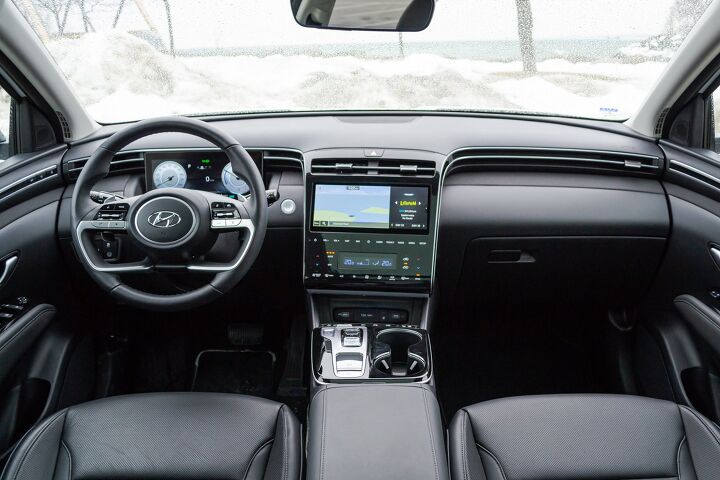
































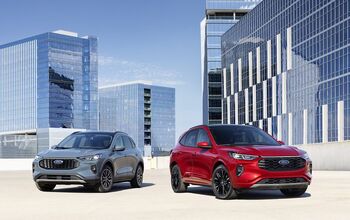
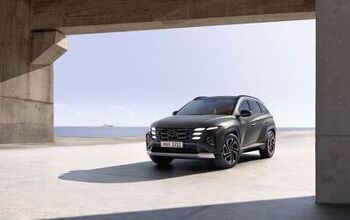


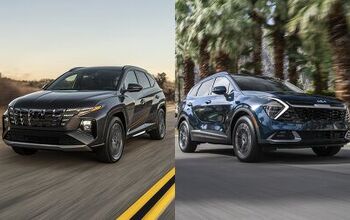


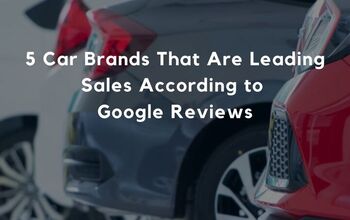

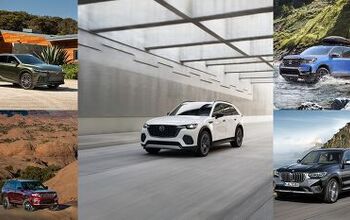
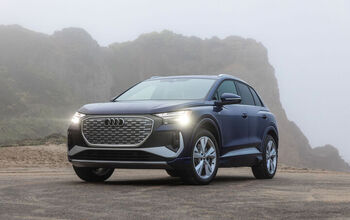
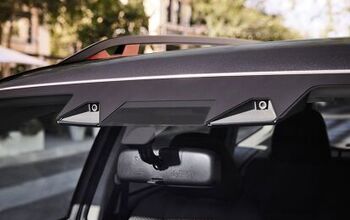

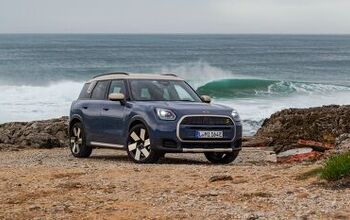
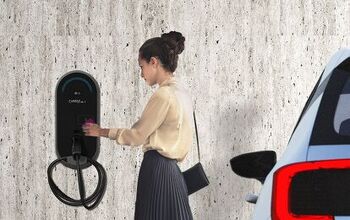
Comments
Join the conversation
The Ford is not anywhere near as popular as the Hyundai is and that is for a reason. Better car, Better quality